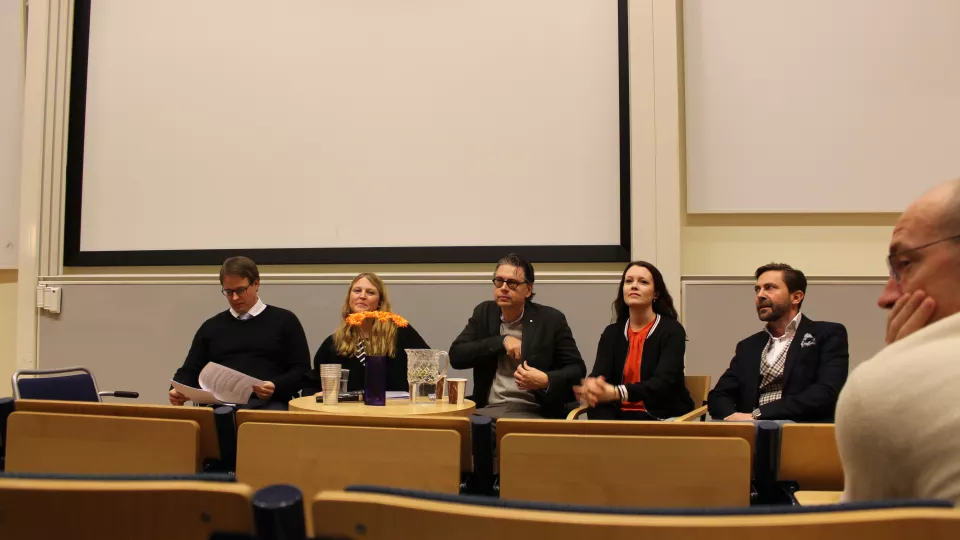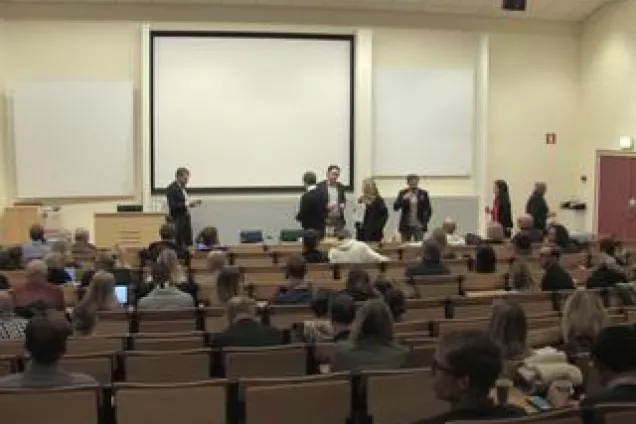The panel participants could all agree that brand communication was a positive thing, and that there are always many images and stories associated with a city. But their views differed as to how the work should be carried out.
“Branding work must start in practice and in people’s everyday lives” said Cecilia Cassinger, a researcher at the Department of Strategic Communication. “It is a dynamic process aimed at creating a shared culture and identity capable of counteracting segregation, for example”.
Johan Anselmsson, a researcher at the School of Economics and Management, thought that grass-roots and bottom-up perspectives could be complemented with a strategic perspective identifying various groups on the basis of their needs and interests. Communication can then be targeted towards different stakeholders and its effects more easily measured.
The City of Helsingborg has invested heavily in branding, including through the employment of more communication officers. Micco Grönholm, Helsingborg’s director of communication, justified the investment by asserting that branding work is about shaping your own reputation.
“Shall we work on our reputation or shall we just let it happen?” he asked rhetorically.
While Grönholm highlighted the city’s investments in citizen dialogue and its website, helsingborg.com, Jörgen Eksell, researcher at the Department of Strategic Communication, thought that over-reliance on co-creation is based on a strategy to streamline work with a view to reducing it, and considering citizens as customers.
At the end of the debate, the panel members were able to agree that the branding work of cities is largely a zero-sum game, but that it was difficult to envisage an alternative. Cities compete for the same labour force, investors and tourists.
In his concluding remarks, moderator Jesper Falkheimer asked which Swedish city had a distinctively strong brand, at which point Lund in the south and Jukkasjärvi in the north were mentioned as examples.
“I can’t say which city has a strong brand”, said Cecilia Cassinger. “But if I were to name a city that I could imagine moving to, it would be Skellefteå. It has an exciting music scene and has worked positively with brand ambassadors with strong connections to the city and people’s everyday life.”
See the whole discussion on: http://bambuser.com/channel/helsingborg



